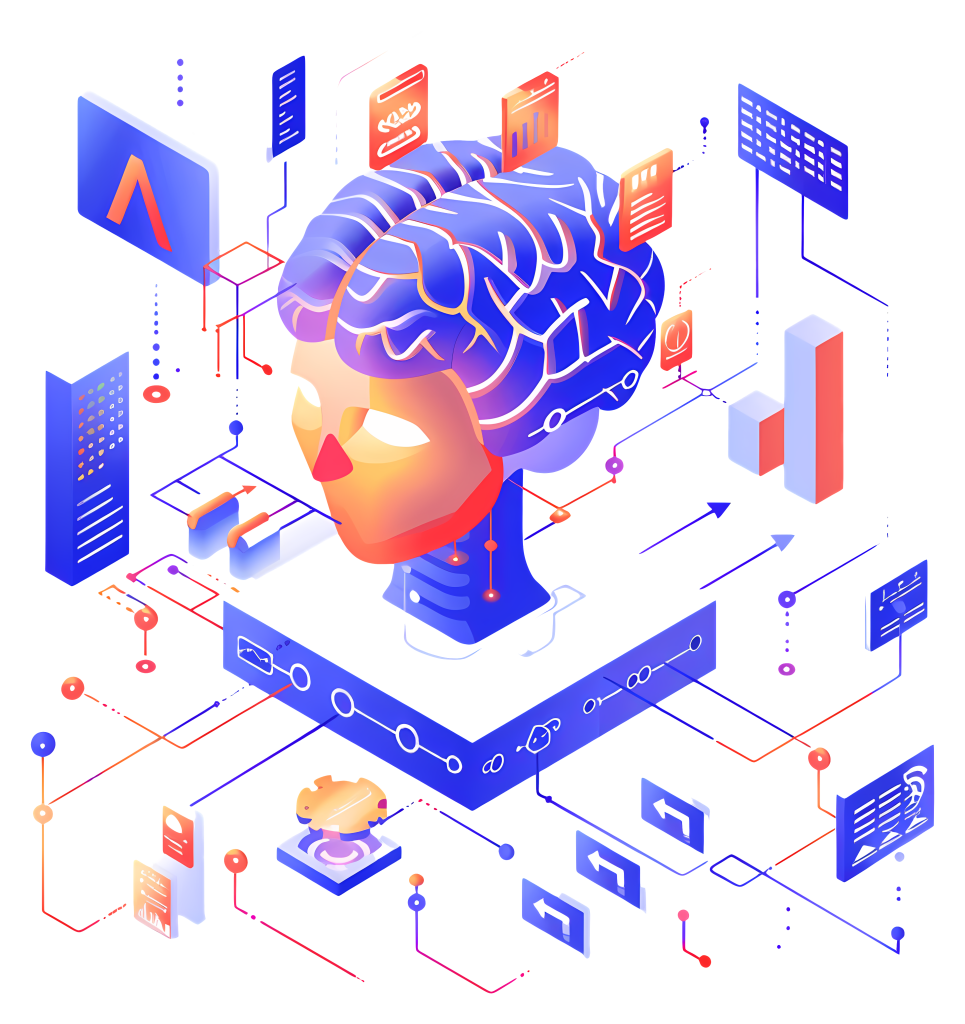Artificial Intelligence (AI) holds immense potential to revolutionize the business landscape. However, despite the promising capabilities of AI, many businesses struggle to implement it effectively. A significant number of AI projects fail to deliver the expected results, often due to poor planning, execution, and understanding of how AI fits into the business context. To address these challenges, Professor Ajay Agrawal has introduced the AI Canvas methodology—a systematic approach to applying AI in the business world. This article explores the AI Canvas, its components, and how it can help reduce the failure rate of AI projects.
Understanding the AI Canvas
The AI Canvas is a strategic framework designed to guide businesses through the process of integrating AI into their operations. It helps identify where AI can add value, defines the necessary steps for implementation, and ensures that all critical aspects are considered. The AI Canvas consists of the following key components:
1. Prediction
AI excels at making predictions based on data. The first step in the AI Canvas is to identify what predictions can significantly impact your business.
Questions to Consider:
- What are the key uncertainties in your business that affect decision-making?
- How can accurate predictions help in reducing these uncertainties?
Example: In retail, predicting customer demand can optimize inventory management, reducing stockouts and excess inventory.
2. Judgment
Once predictions are made, the next step is judgment. This involves determining the actions that should be taken based on those predictions. Judgment requires domain knowledge and expertise.
Questions to Consider:
- What are the possible actions that can be taken based on different prediction outcomes?
- How should these actions be prioritized?
Example: A bank using AI to predict loan defaults must decide on actions such as approving, denying, or adjusting loan terms based on the prediction.
3. Action
The third component is action—implementing the decisions made through judgment. This involves operationalizing AI-driven insights into business processes.
Questions to Consider:
- How will the actions be executed within the current operational framework?
- What resources are needed to support these actions?
Example: An e-commerce platform using AI predictions to personalize marketing campaigns must integrate these insights into their marketing automation systems.
4. Outcome
Evaluating the outcomes of AI-driven actions is crucial to understanding their effectiveness. This component focuses on measuring the impact and iterating for improvement.
Questions to Consider:
- What metrics will be used to evaluate the success of the AI implementation?
- How will feedback be collected and used to refine the AI model?
Example: A healthcare provider using AI to predict patient readmissions should track metrics such as readmission rates and patient outcomes to assess the AI’s accuracy and effectiveness.
5. Learning
Continuous learning is essential for AI systems to improve over time. This involves updating models based on new data and insights.
Questions to Consider:
- How will the AI system be updated with new data?
- What processes are in place for ongoing learning and improvement?
Example: A logistics company using AI for route optimization must continuously update its model with new traffic data and delivery outcomes to enhance accuracy.
Benefits of the AI Canvas
1. Structured Approach
The AI Canvas provides a structured approach to AI implementation, ensuring that all critical aspects are considered. This reduces the risk of overlooking important factors that can lead to project failure.
2. Clear Objectives
By defining clear objectives for each component, businesses can align AI initiatives with their strategic goals. This ensures that AI projects deliver tangible business value.
3. Improved Decision-Making
The AI Canvas emphasizes the importance of judgment and action, ensuring that AI-driven insights are translated into effective business decisions and actions.
4. Continuous Improvement
The focus on outcomes and learning ensures that AI systems are continuously refined and improved, leading to better performance over time.
Practical Steps to Implement the AI Canvas
Step 1: Identify Key Predictions
Start by identifying the key predictions that can impact your business. This requires understanding your business processes and identifying areas where uncertainty affects decision-making.
Example: A retailer might focus on predicting customer demand, optimal pricing, and inventory levels.
Step 2: Define Judgment Criteria
Determine the actions that will be taken based on different prediction outcomes. This requires input from domain experts to ensure that decisions are practical and effective.
Example: For the retailer, this could involve adjusting inventory orders, launching promotional campaigns, or adjusting pricing strategies.
Step 3: Operationalize Actions
Integrate the AI-driven decisions into your business processes. This involves aligning resources, training staff, and updating systems to support the new workflows.
Example: The retailer might need to update their supply chain management system to incorporate AI-driven inventory predictions.
Step 4: Measure Outcomes
Define metrics to evaluate the success of the AI implementation. This could include KPIs such as cost savings, revenue growth, customer satisfaction, and operational efficiency.
Example: The retailer should track metrics such as inventory turnover, sales growth, and customer satisfaction to assess the impact of AI-driven decisions.
Step 5: Enable Continuous Learning
Establish processes for continuous learning and improvement. This involves regularly updating the AI model with new data and insights and refining the system based on feedback.
Example: The retailer should continuously update their AI model with new sales data and market trends to improve prediction accuracy.
Conclusion
The AI Canvas methodology by Professor Ajay Agrawal offers a comprehensive framework for integrating AI into business operations. By focusing on key components such as prediction, judgment, action, outcome, and learning, businesses can ensure that AI projects are well-planned, effectively executed, and continuously improved. This structured approach reduces the failure rate of AI projects and ensures that AI initiatives deliver tangible business value.
By adopting the AI Canvas, businesses across various industries can harness the power of AI to drive innovation, improve decision-making, and achieve their strategic goals. In an era where AI is becoming increasingly integral to business success, the AI Canvas provides a valuable tool for navigating the complexities of AI implementation and maximizing its potential benefits.

